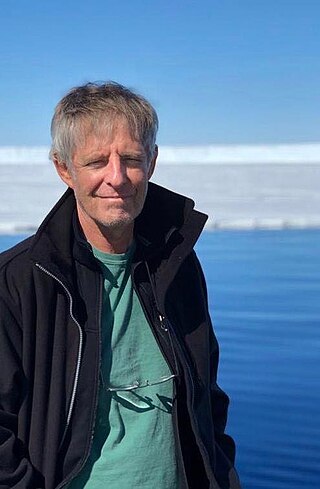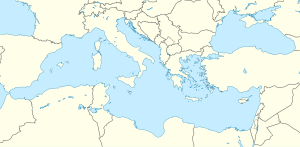
Maritime archaeology is a discipline within archaeology as a whole that specifically studies human interaction with the sea, lakes and rivers through the study of associated physical remains, be they vessels, shore-side facilities, port-related structures, cargoes, human remains and submerged landscapes. A specialty within maritime archaeology is nautical archaeology, which studies ship construction and use.

Robert Duane Ballard is an American retired Navy officer and a professor of oceanography at the University of Rhode Island who is most noted for his work in underwater archaeology: maritime archaeology and archaeology of shipwrecks. He is best known for the discoveries of the wrecks of the RMS Titanic in 1985, the battleship Bismarck in 1989, and the aircraft carrier USS Yorktown in 1998. He discovered the wreck of John F. Kennedy's PT-109 in 2002 and visited Biuku Gasa and Eroni Kumana, who saved its crew.

A shipwreck is the wreckage of a ship that is located either beached on land or sunken to the bottom of a body of water. Shipwrecking may be intentional or unintentional. There were approximately three million shipwrecks worldwide as of January 1999, according to Angela Croome, a science writer and author who specialized in the history of underwater archaeology.

Wreck diving is recreational diving where the wreckage of ships, aircraft and other artificial structures are explored. The term is used mainly by recreational and technical divers. Professional divers, when diving on a shipwreck, generally refer to the specific task, such as salvage work, accident investigation or archaeological survey. Although most wreck dive sites are at shipwrecks, there is an increasing trend to scuttle retired ships to create artificial reef sites. Diving to crashed aircraft can also be considered wreck diving. The recreation of wreck diving makes no distinction as to how the vessel ended up on the bottom.
The Institute of Nautical Archaeology (INA) is the world's oldest organization devoted to the study of humanity's interaction with the sea through the practice of archaeology.
The year 1999 in archaeology involved some significant events.

HMS Sirius was a Dido-class light cruiser of the Royal Navy. She was built by Portsmouth Dockyard, with the keel being laid down on 6 April 1938. She was launched on 18 September 1940, and commissioned 6 May 1942.
Pedro Bank is a large bank of sand and coral, partially covered with seagrass, about 80 km south and southwest of Jamaica, rising steeply from a seabed of 800 metres depth. It slopes gently from the Pedro Cays to the west and north with depths from 13 to 30 metres. The total area of the bank within the 100-metre (328-foot) isobath measures 8,040 square kilometres. The area of a depth to 40 metres is triangular, 70 kilometres long east-west, and 43 kilometres wide. 2,400 square kilometres are less than 20 metres deep. With its islets, cays and rocks, a total land area of 270,000 m2 (2,906,256 sq ft), it is the location of one of the two offshore island groups of Jamaica, the other one being the Morant Cays. The bank is centered at 17°06′N78°20′W.

The archaeology of shipwrecks is the field of archaeology specialized most commonly in the study and exploration of shipwrecks. Its techniques combine those of archaeology with those of diving to become Underwater archaeology. However, shipwrecks are discovered on what have become terrestrial sites.

Mensun Bound is a British maritime archaeologist born in Stanley, Falkland Islands. He is best known as director of exploration for two expeditions to the Weddell Sea which led to the rediscovery of the Endurance, in which Sir Ernest Shackleton and a crew of 27 men sailed for the Antarctic on the 1914–1917 Imperial Trans-Antarctic Expedition. The ship sank after being crushed by the ice on 21 November 1915. It was rediscovered by the Endurance22 expedition on 5 March 2022.

George Fletcher Bass was an American archaeologist. An early practitioner of underwater archaeology, he co-directed the first expedition to entirely excavate an ancient shipwreck at Cape Gelidonya in 1960 and founded the Institute of Nautical Archaeology in 1972.

The Battle of Skerki Bank was an engagement during the Second World War which took place near Skerki Bank in the Mediterranean Sea in the early hours of 2 December 1942. Force Q, a flotilla of Royal Navy cruisers and destroyers, attacked Convoy H, an Italian convoy and its Regia Marina escort of destroyers and torpedo boats.

RPM Nautical Foundation is a non-profit archaeological research and educational organization dedicated to the advancement of maritime archaeology that includes littoral surveys and excavation of individual shipwreck and harbor sites.
Ancient Black Sea shipwrecks found in the Black Sea date to Antiquity. In 1976, Willard Bascom suggested that the deep, anoxic waters of the Black Sea might have preserved ships from antiquity because typical wood-devouring organisms could not survive there. At a depth of 150m, the Black Sea contains insufficient oxygen to support most familiar biological life forms.
Sinop D is an ancient Black Sea shipwreck located to the east of Sinop, Turkey. The ship was discovered by a team led by Robert Ballard with Dan Davis in 2000. The team discovered the well-preserved wreck at a 320 m depth, in the Black Sea's deep anoxic waters. The vessel's entire hull and cargo are intact, buried in sediments. Its deck structures are also intact, including a mast, and rope attached on the top, rising some 11 m into the water column. Radiocarbon dating of wood from the wreck provides a date of 410–520 CE. However, the wreck could not be completely salvaged as the mud and sediment encasing the wreck were hard to remove without possibly causing damage to the already fragile ship.
John Peter Oleson is a Canadian classical archaeologist and historian of ancient technology. His main interests are the Roman Near East, maritime archaeology, and ancient technology, especially hydraulic technology, water-lifting devices, and Roman concrete construction.

Honor Frost was a pioneer in the field of underwater archaeology, who led many Mediterranean archaeological investigations, especially in Lebanon, and was noted for her typology of stone anchors and skills in archaeological illustration.

Anna Marguerite McCann was an American art historian and archaeologist. She is known for being an early influencer—and the first American woman—in the field of underwater archaeology, beginning in the 1960s. McCann authored works pertaining to Roman art and Classical archaeology, and taught both art history and archaeology at various universities in the United States. McCann was an active member of the Archaeological Institute of America, and received its Gold Medal Award in 1998. She also published under the name Anna McCann Taggart.

The Gozo Phoenician shipwreck is a seventh-century-BC shipwreck of a Phoenician trade ship lying at a depth of 110 meters (360 ft). The wreck was discovered in 2007 by a team of French scientists during a sonar survey off the coast of Malta's Gozo island. The Gozo shipwreck archaeological excavation is the first maritime archaeological survey to explore shipwrecks beyond a depth of 100 meters (330 ft).













